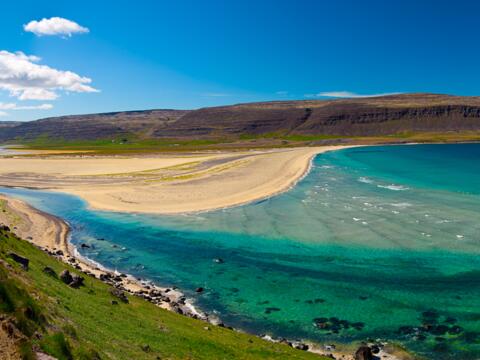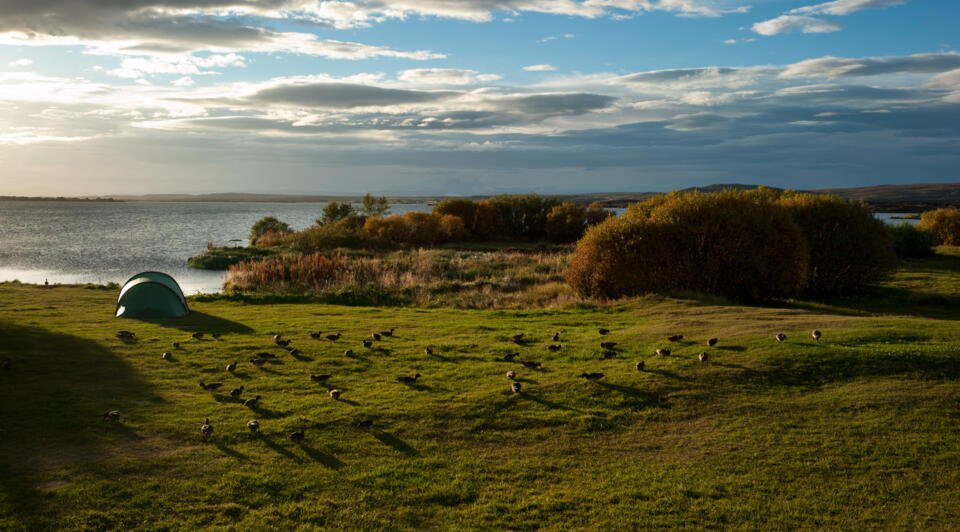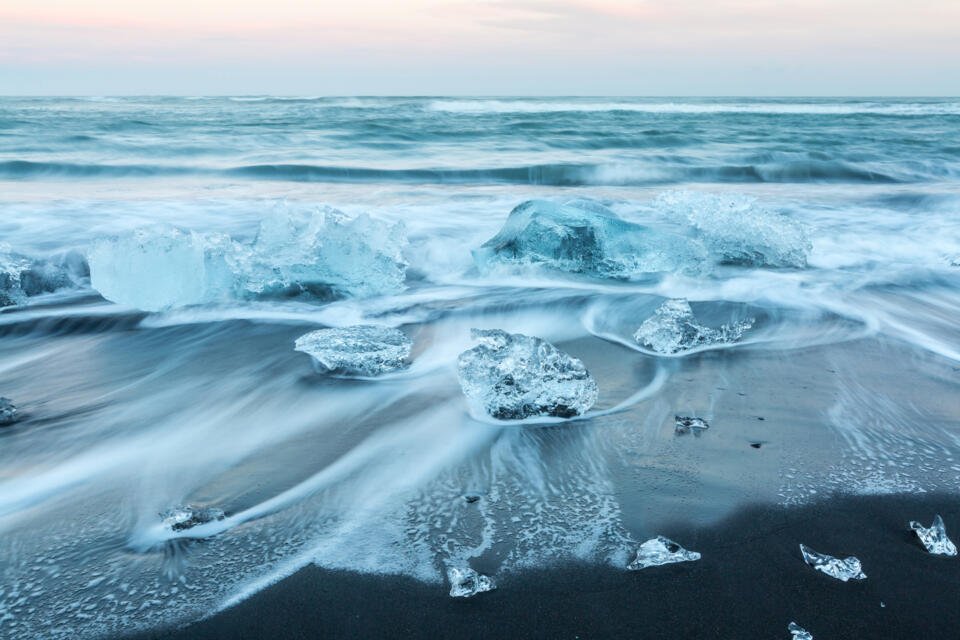When is the most beautiful time to be in Iceland?
Iceland: the best time to travel there
The best time to book a flight to Iceland would be: right now. Why? Very simple: Whether spring, summer, autumn or winter - the largest volcanic island in the world has much to offer its visitors in every season.
In this post, we reveal when bird lovers can best pursue their passion, which area is one of the driest areas on the island, and much more.
Whatever plans you have for your holiday in Iceland, we will gladly advise you on the ideal travel time and help you prepare your trip.
- Northern lights are most likely to be discovered in the period from October to March
- The highland roads are generally passable in July and August
- The main travel time for Iceland is between mid-June and the end of August
Pure variety
Just like Icelandic nature, the weather on the Atlantic island is above all else: diverse. The climatic spectrum ranges from pleasantly warm summer days to foggy winter days, which in turn are able to charm with their own unique atmosphere.
Surprising rain showers, strong gusts of wind and sometimes even sand or ash storms should always be expected.
Basically, it is warmer in the coastal region than in the interior of the island - with the south registering the milder climate thanks to the Gulf Stream. The northeast, however, is considered a drier area, since the rain clouds rain from the south mostly at Vatnajökull.
Auroras
Many go to Iceland to hunt for the Northern Lights. The best time to observe this unique spectacle is in the winter season. With our offer "Northern Lights & Wellness" we accompany you with your personal and completely relaxed – Nordlight hunting!
Time to awaken, time to travel
From May to June, any type of weather can be expected on holiday in Iceland. Strong snow showers can quickly turn into bright sunshine. On the 21st of March, day and night are exactly the same length here in the north - and the dark hours decrease.
Thanks to the early long days, nature "recovers" quickly, quickly leaving behind the harsh, barren winter. In the area around Myvatn countless plants are blooming and the first birds return from the south.
Incidentally, Grjótagjá and Stóragjá bathing caves also invite you to relax and unwind when snowflakes dance across the lake in the Icelandic spring.
Spring Tip:
Especially in the spring, a trip to the Skogafjord pays off. The area is considered the largest breeding area for Icelandic horses - the countless fluffy foals guarantee to put a smile on every visitor’s face!
Iceland trip during summer time
From July to August is the high season in Iceland. Virtually all museums are now open, buses run at close intervals and all tourist attractions open their doors.
It is the warmest time of the year and the coastal regions reach about 12-15 degrees - in some privileged places up to 20 and more.
While the early summer months score highly with the highest rainfall, September also has its charms: Often, especially in the first half of the month, exceptionally beautiful weather prevails. Tourist crowds slowly slow down and some natural highlights can be visited in relative "peace and quiet".
Summer Tip:
End of June is the best time to travel for ornithologists. Iceland is popular with birdwatchers - no wonder, as Myvatn alone hosts an incomparable variety of duck species.
Colourful travel time: the autumn
From the second half of September, the already colourful island becomes a true sea of colour: Together with the many-coloured lava fields, the turquoise-blue lakes and the colorful lichens, the discolouring leaves create an amazing spectacle.
Autumn is the perfect time for photographers who want to take special snapshots in Iceland. An Autumn highlight - especially in rural areas - is the traditional sheep run.
In addition to numerous opportunities for perfect pictures, these happy sheep also offer the opportunity to get to know the country and its people better.
Autumn Tip:
If you want to experience the colourful Autumn in Iceland, do not wait too long. Winter often ends the short, golden season very abruptly from one day to the next.
Winter travel in Iceland: Time for adventure
Frozen waterfalls, snow covered plains, ski touring routes, super jeep safaris and more:
The winter in Iceland is far more than dark and long! While temperatures in the southern coastal regions range between around 0-3 degrees, it gets colder inland:
Glittering winter landscapes invite you to unforgettable excursions and offer unique photo opportunities.
Winter Tip:
Especially in winter, the many thermal pools in the country offer a welcome break. After a trip into the wintry nature in one of the famous hot pots – such as in the Blue Lagoon – let yourself be lapped by warm water and enjoy the view of the snowy lava fields.






